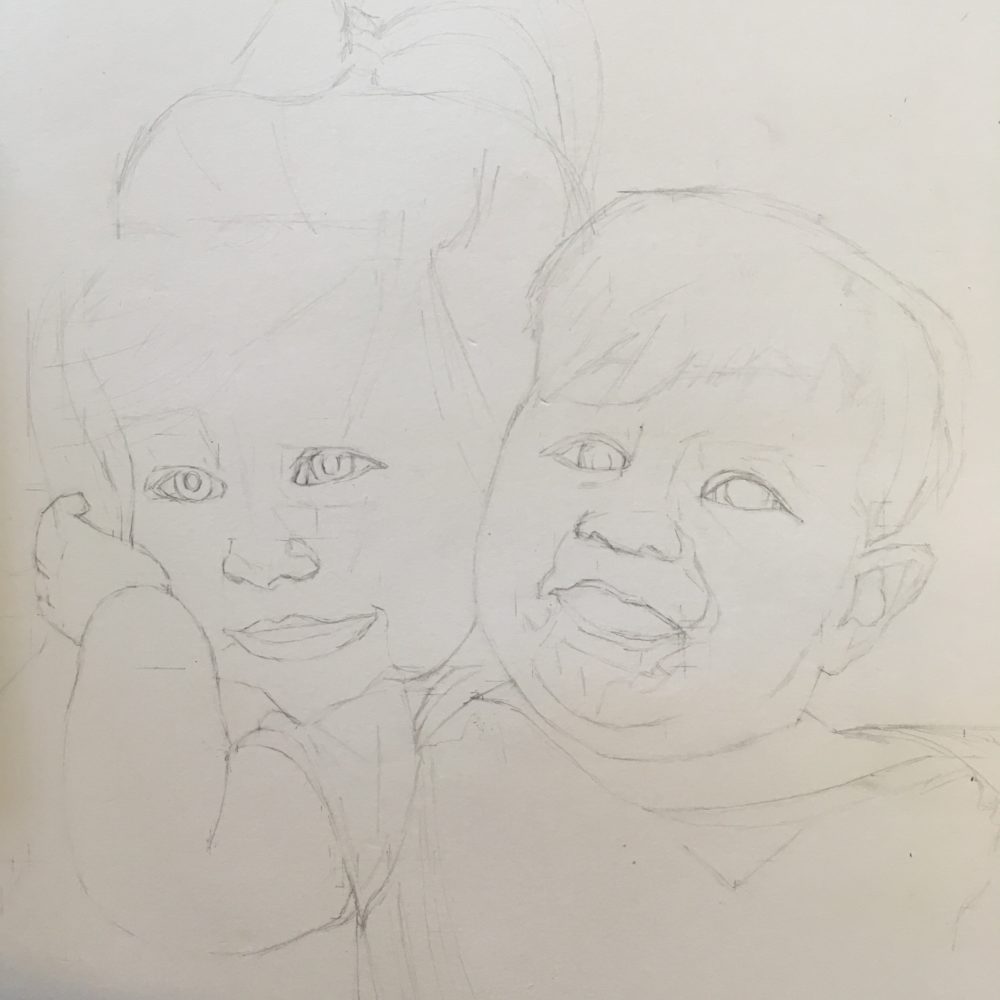This is Lilly and Polly, they’re sisters and they are 2 and a half and 11 months old. Their favourite things are their mini-kitchen, their dollies and cuddles.
This double portrait was such joy to make because the girls had such love between them. Also, just using one final reference photo rather than multiple meant the energy and composition seems authentic and ‘real’.
Agreeing on the composition and how your client wants the image to appear is possibly the most important thing to get right when starting a piece. After showing the client some examples, we decided together that we wanted the girls to be embracing and ‘close’ in some way so that formed the basis for our approach to a photographic reference point.
It’s worth looking at art history for the many ways artists have depicted a double portrait (often to tell us a political or social story), such as romantic couples even where there is discord (think this by Hockney, this by Van Eyck or this by Gainsborough), professional companions where there’s appropriate space between (think this by Holbein) or family members where a distance was portrayed (think this by Portinari, or this by Schadow).
To get my reference imagery for this portrait of sisters, I did a little photoshoot of both of them together for use back in the studio. This was far preferable than the girls sitting for me while I draw because at this age they are so expressive, they’re rather wriggly, and their attention spans are quite slim.
It took the girls a while to get used to the camera. I seem to get a good rapport with kids – but patience and earning their trust is key when on a photoshoot as it can be overwhelming for them. Fortunately, we ended up having lots of smiles and even more great pictures!
So what should you aim for when taking a photograph for an artwork portrait?
My goal for a studio-made double portrait is to select just one photograph to work in which they both feature. I would use the other photos as reference points for the individual detail – for example, to develop the fold of the clothes, the fall of the hair, the eye colour and the exact turn of the cheeky smile. But overwhelmingly, we need one photograph – mainly because the energy between the two subjects just works this way, and the colour reference, lighting and naturalness of the dynamic is obvious.
Another goal for me when taking photos is to have an image which is vibrant and natural, because my artistic style is to express ‘movement’, realness and energy. I won’t want to draw a picture where the subject is rigid and dour, I’d prefer a silly face to get the character of the person over.
Good luck with your double portraits and preceding photoshoots.
Meanwhile stay tuned to see how this double portrait ends up!



